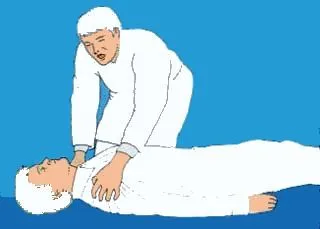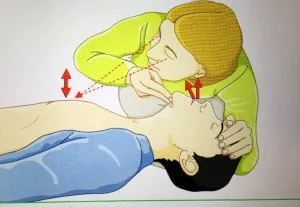
Hello to everyone,
I am a nurse who has been in emergency care for more than 10 years and in my work experience I understand that in some cases people's lives are decidedly out of the hospital, but by those who first intervene on the patient from ailments with few life-saving maneuvers.
I have decided to share with you some small steps to be taken in the event of an individual's sudden cardiac arrest.
The most common causes of cardiac arrest are myocardial infarction, heart arrhythmias, drowning, blistering, asphyxiation, trauma, poisoning. Survival for this event is less than 10% .; Oxygen deficiency in the brain produces lesions that can become irreversible after 4-6 minutes of absence of circulation.
The possibilities to prevent this damage depend on the speed and effectiveness of rescue procedures that can be summed up in the proper application of the Survival Chain. International scientific literature has shown that timely and correct relief, in the event of a sudden cardiac arrest, helps save up to 30% of people affected.

If you see a person fall.
1 ASSESS THE CONSTANT STATUS To evaluate the conscience status of a subject on the ground, it is sufficient that he CAME HIGH-VOICE SCOOTING simultaneously for the shoulders, using both the vocal and the tactile solicitation. If he does not answer, he is unconscious: immediately ask for help (generic) to those near you by bringing the AED if you are near a designated workstation and CALL or call the emergency number.

2 CARE IF BREATHING Keeping your head over-stretched, you have a cheek very close to the victim's oral cavity and there is a lack of respiratory activity.
- Look at any chest movements
- Listen to the presence of respiratory noise
- I feel, on my cheek, the outbreak of hot air from the mouth of the victim. This operation must be done for five seconds.

3 IF IT IS NOT RESPIRING AND DOES NOT MOVE THAT YOU MAKE THE DEFIBRATOR ... and turn it on. By opening the lid, the new defibrillators turn ON AUTOMATICALLY. Otherwise, you will find a green ON / OFF button. Now let yourself be guided by voice instructions.
CONNECTING THE ELECTRODES - The AED is provided with two adhesive electrodes already connected to the appliance with a plug. Open the envelope and detach an electrode from the Positive Adhesive as shown in the figure above the electrode itself. Disconnect the second electrode and position it as shown in the figure above the electrode itself. An electrode is placed under the right clavicle of the patient, while the other under the left breast area makes them adhered well to the skin. In the presence of wet skin, wipe it as far as possible.
RESPECT SAFETY RULES - When electrodes are applied, the AED is automatically analyzed. Already at this stage, in order to avoid interference, invites people around you to get away. Be careful that no one touches the patient during shock delivery. It can interfere with the correct analysis and the discharge creates a discomfort to the patient.
SHOCK - AED recognizes if the patient is in cardiac arrest due to an electric disorder called "ventricular fibrillation" that can be interrupted by electric shock. Only in this case is it possible to dispense the electric discharge and announces "recommended shock". Within seconds, it is predisposed to discharge the discharge and, by issuing an alarm sound, invites voice command to disperse the shock. At this point, press the orange button that lights up. The electric discharge will pass to the patient one or more times trying to stop the cardiac arrest.
FOLLOW THE SEQUENCE - The AED is programmed to scan the heart rhythm three times consecutively and three times may recommend shock if arrhythmia persists. If the rhythm changes (electrically correct rhythm reset or asystole evolution), the AED indicates "shock not recommended". Wait for the ambulance to arrive, if the AED requires you to do the heart massage by following the vocal instructions and placing your hands in the center of the chest.
You will thus make the first life-saving maneuvers.